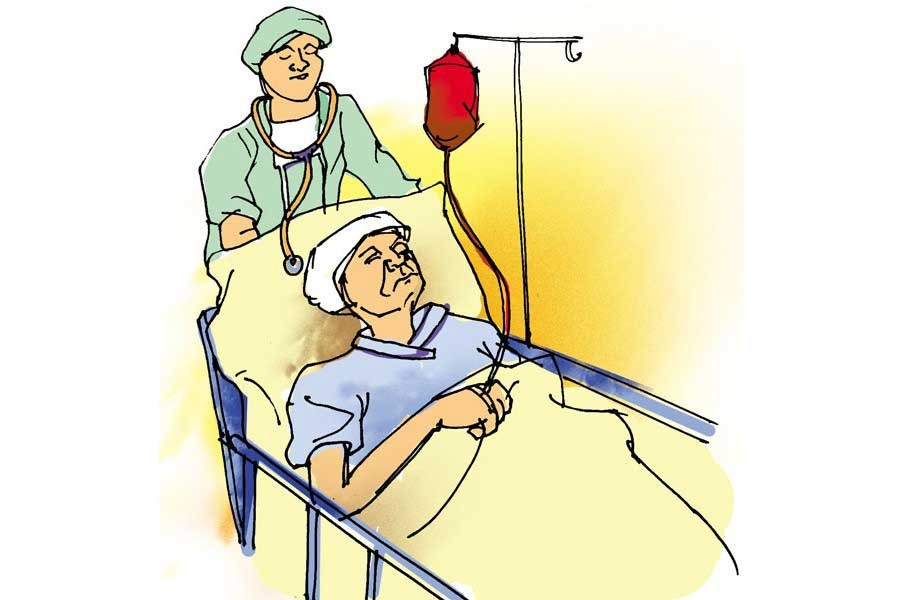
Published :
Updated :

The call to raise the allocation for the health sector at the time of budget preparation every year has become more of a ritual. But the appeal hardly moves the people who burn the midnight oil to solve the budgetary arithmetic. The allocation remains deplorably low, equivalent to 1.0-2.0 per cent of the country's gross domestic product (GDP).
Late last week, experts at a dialogue organised in Dhaka also made a powerful plea for higher allocation. They presented data aplenty to convince the relevant authorities of the need for raising allocation for the health sector, which stood at 5.14 per cent of the budget spending in the fiscal year (FY) 21 and 1.0 per cent of the GDP. Naturally, because of such low allocation, the people are forced to make most of the health expenditures from their own pockets. The extent of out-of-pocket expenditure is estimated at 68 per cent.
It will not be out of place to note here that more than three-fourths of the government's spending on health comes from development partners and other sources. This highlights how meagre the government spending is from the domestic resources. There is also another side of the coin. The country is set to leave the club of the least developed countries in 2026. The concessional external assistance would dry up then, requiring the government to deploy its resources in higher volume to meet the health sector requirement like many other sectors. The ministry of health needs to look into this particular issue and make adequate preparations to meet future needs.
Bangladesh is getting plaudits from both home and abroad for managing well the Covid vaccination programme. The government has spent a lot of money for its coffers. In addition, there came notable assistance from other countries through the Covax and beyond. But the country's deep vulnerability concerning the management of the health sector surfaced during the initial months of the pandemic. True, no country was prepared for such a health catastrophe. Bangladesh's lack of preparedness appeared too deep, in terms of logistics and skilled manpower.
The health infrastructures have expanded both in the private and public sectors. Private hospitals and clinics have mushroomed in recent years. These facilities are more interested in making hefty profits than providing quality service to their patients. The poor and low-income people failing to afford the services of private health facilities crowd the government hospitals and clinics.
But allegations of poor service delivery by these facilities abound. The state of upazila health complexes does not need any mention. The situation with public hospitals at district headquarters is not better either. They also suffer from a shortage of qualified manpower, equipment and medicines. The tertiary level health facilities do also have problems.
The topmost priority of the government's health policy under the prevailing circumstances should be to meet the minimum health-related requirements of the poor and low-income people either at no or at least cost. Then, there comes the issue of disciplining the private sector health facilities through the application of necessary rules and regulations and monitoring. Higher allocation is not enough to fix the health sector problems. The sector is clamouring for better management. That need must also be met.


 For all latest news, follow The Financial Express Google News channel.
For all latest news, follow The Financial Express Google News channel.